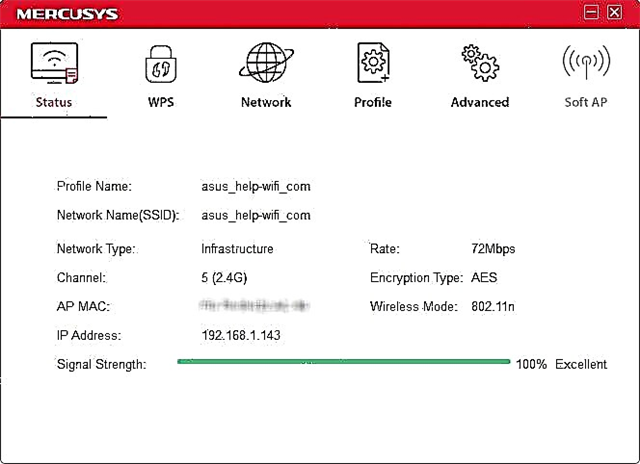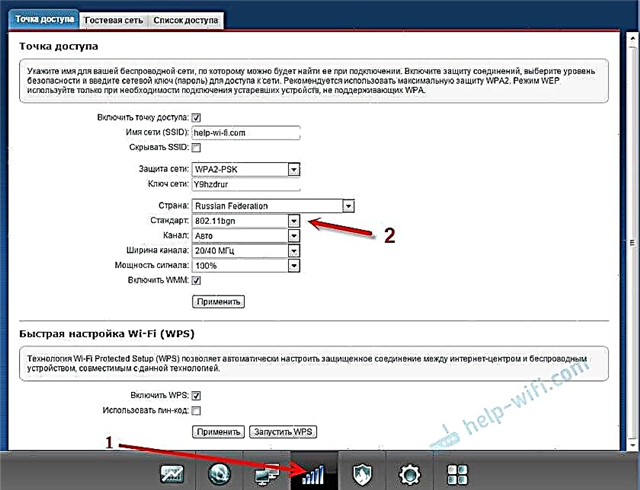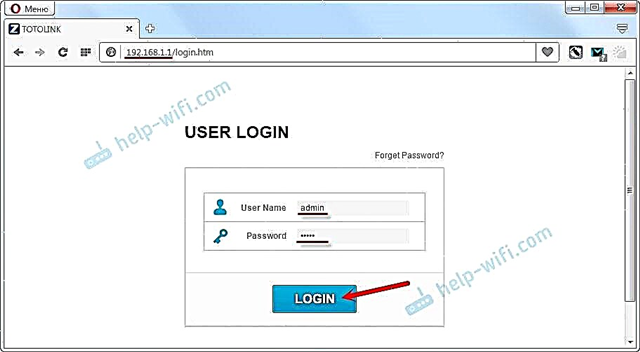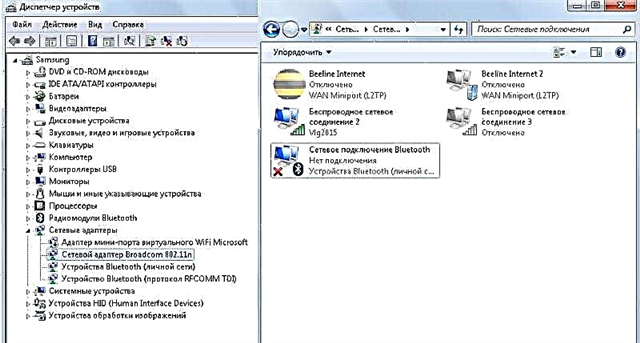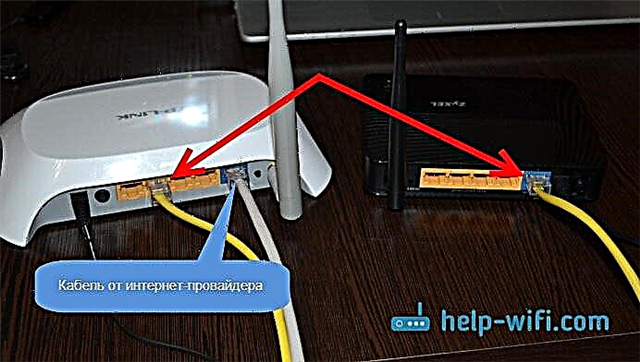Consider in this article two options by which you can connect routers to each other on the same network. The first option is to connect two routers via Wi-Fi, and the second option is to connect the routers via a network cable. In any case, the routers will work in the same network, and each will distribute the Internet both via cable and Wi-Fi.
Why set up such a scheme at all and why connect one router to another? There are different situations. Most often, this is an extension of the Wi-Fi network coverage area, although for such tasks I recommend using repeaters, or routers that can work in repeater mode. Everything is very simple here. We have already installed and configured a router, or a modem that distributes the Internet. We connect the second one to this router, wirelessly, or using a network cable. By installing a second router in another room, or on another floor, it will distribute Wi-Fi further.
Or, in this way, you can connect the Internet from a neighbor. Pay for one connection, and divide it into two routers. In fact, there are a lot of options. And if you have already visited this page, then most likely you already know why you need to connect one router to the second. Therefore, let's get down to business.
Two routers on the same network: connection options
There are two options:
- Connect routers via Wi-Fi network... In WDS mode, or bridge mode. It is the same. In this case, you can install them at a relatively large distance. Well, you don't need to lay a cable. But there are also disadvantages, the Wi-Fi connection is not very stable, the wireless speed will also drop. If you are having trouble using a cable to connect, then the wireless option will work for you. Well, not every router supports WDS mode (especially from older devices).
- The second option is to connect two routers with a network cable in the same network. The method is reliable, proven, but it is not always suitable due to the fact that you have to lay the cable, and the cable itself, as a rule, needs a long one and you already need to either buy it or make it yourself. You can use the one that comes with the router, but it's short.
I think you have already chosen the connection method that suits you. Now we will consider them in more detail.
We connect two routers via Wi-Fi (in WDS mode)
Let's look at the example of the most popular manufacturers: Asus, Tp-Link, Zyxel, and D-link.
This means that you must have a main router, which should distribute a Wi-Fi network, to which we will connect the second. It can be anything. In the sense that it is not necessary that it would be, for example, two Tp-Link routers (although desirable).
Do I need to change the settings of the main router? Yes. In the settings of the main router, you need to set the static channel of the wireless network. Otherwise, connection problems may occur. How to change the channel on different routers, I wrote in this manual. Set for example static 6 channel. And remember it, it will still be useful to us.
That's it, you don't need to change any settings of the main device.
Setting up a WDS connection on a Tp-Link router
For setting up such a scheme on Tp-Link, we have a separate, detailed instruction: Setting up a Tp-Link router in bridge mode (WDS). We connect two routers via Wi-Fi. If you have Tp-Link (TL-WR740ND, TL-WR841N, TL-WR941ND, TL-MR3220, TL-WR842ND, etc.), then you can safely follow the link.

Everything is very simple there: go to the settings, change the IP address of the router, and set up the WDS mode. I will not describe everything in detail here, since there is a very detailed instruction at the link above. With Tp-Link sorted out, let's move on to models from other manufacturers.
Setting up bridge mode on an Asus router
I just sat for more than an hour, figuring out what was going on with the bridge mode on Asus routers, and I can say that they did everything there very complicated and confusing. As far as I understand, you can configure WDS on an Asus router only if you have an Asus main router. There, on both routers, you need to register MAC addresses, etc. Perhaps I'm wrong, correct me (in the comments). Tested on Asus RT-N12, and RT-N18.

Everything works for Tp-Link without all these problems. I give a link to the setup instructions on the official Asus website: https://www.asus.com/ua/support/faq/109839. And I will definitely deal with these settings, and prepare a separate article on how to configure the bridge mode on Asus routers.
Or I advise you to configure it in repeater mode. Everything is much simpler there, and everything works. Checked.
Connecting a D-Link router to another router via Wi-Fi (client mode)
With D-Link, I figured it out. There this mode is called "Client Mode". Set it up and everything works fine. My main router is Asus, and I connected D-link DIR-615 to it (with new firmware 2.5.20).
To begin with, we connect to our D-Link via cable, and go to the settings at 192.168.0.1. Go directly to the tab Wi-Fi - Client... Check the box next toEnable, in the list of networks, select our network (the main router), in the fieldWPA encryption specify the password for your network and click on the button Apply... And if another message appears about changing the channel, then press Ok.

Then go to the tab Net - WAN... Select all the profiles that are there with checkmarks and click the button Delete.

Then, click on the button Add to, select from the list Dynamic IP... In fieldInterface select item WiFiClient, and press the button Apply.

After that, you need to save the settings by clicking on the item System, and choosing Save... Then hover the mouse over the System item again and select Reboot.

After these settings, our D-Link will connect to the main router via a Wi-Fi network, receive the Internet from it, and distribute it further via Wi-Fi, or by cable. Do not forget to put a password on the Wi-Fi network. Everything works, proven.
Connecting two routers over Wi-Fi on Zyxel
Everything is perfectly done on Zyxel Keenetic devices. There, to use the Zyxel Keenetic router in bridge mode, you need to configure it to connect to the provider via Wi-Fi. This mode is also called WISP. In our case, the main router, which is already broadcasting the Wi-Fi network, will act as the provider. I have already written detailed instructions with pictures for setting up this scheme. See the article: client mode (wireless bridge) on a Zyxel Keenetic router.

Well, or set up your Zyxel Keenetic as a repeater. He does this job well. The difference between these modes is that in the first case (when setting up WISP) the second router will distribute the Internet over its Wi-Fi network, that is, there will be two of them. And you can use all the functions of the router. And when configured in repeater mode, the wireless network will be one, just amplified by the second device.
How to connect two routers via cable?
Let's take a closer look at the second option - a network cable connection. Perfect if there are no problems with cable laying, or when your modem (which, for example, was given to you by your provider) does not know how to distribute Wi-Fi. In this case, you can simply connect a Wi-Fi router to it using this scheme.
Important! Since we have setup instructions two routers in one network, then the LAN-WAN connection diagram described below does not fit... Everything will work, but the routers will not be on the same network, since the DHCP server is enabled on the second router. In order for the routers to be on the same network, you need to disable the DHCP server on the second and connect them according to the LAN-LAN scheme. Read more in the instructions: how to make a router a Wi-Fi access point.
We'll need a simple network cable. For example, the one that came with the router. If you need a longer cable, then you can order it from some computer store, they must make the cable of the length you need.
You do not need to configure anything on the main router (modem). The main thing is that a DHCP server is enabled on it. Automatic distribution of IP addresses. It is most likely enabled by default.
I will show you using the example of connecting a Tp-Link router to D-Link (it is our main and black one). So we take the cable, and on the main router we connect it to LAN connector (in one of four if you have 4). And on the second router, we connect the cable to WAN connector... See screenshot below. My routers are connected with a black cable. The white cable is the Internet that is connected to the main router.

It turns out that Tp-Link will receive Internet from D-Link, and distribute it wirelessly or via cable.
If, after connecting, the Internet from the second router does not work, then first of all, reset the settings on it, and then check that the automatic obtaining of the IP address (Dynamic IP) is set in the settings of the router that we are connecting. On Tp-Link, this is done like this:

On other routers, these settings are set in the control panel, on the WAN tab, Internet, etc.
Here, for example, is another diagram of connecting two routers via cable: Tp-Link to Zyxel. In this case, we have the main Tp-Link. The internet is connected to it.

Exactly in the same way, the router is connected to the ADSL modem.
Afterword
Everything I wrote in this article, I checked it myself, and everything works. I tried to prepare the most simple and understandable instruction. But, if something did not work out for you, then you can describe your case in the comments, I will try to advise something.
Well, you share your experience. If there is any useful information, I will definitely update the article.


